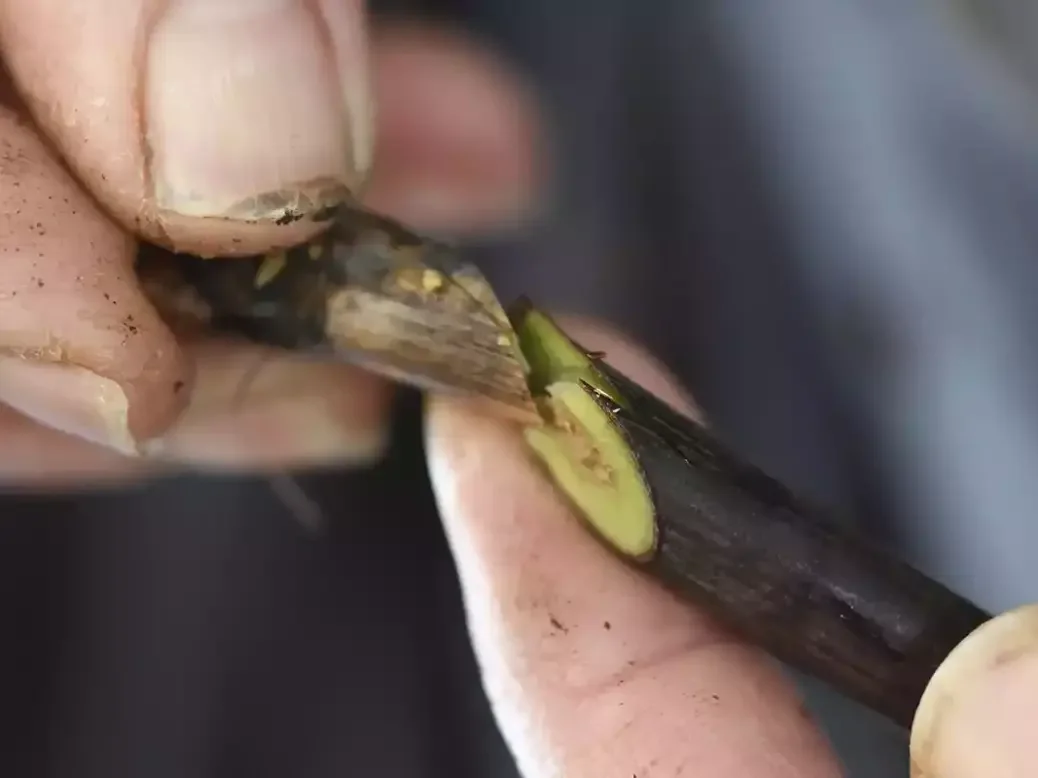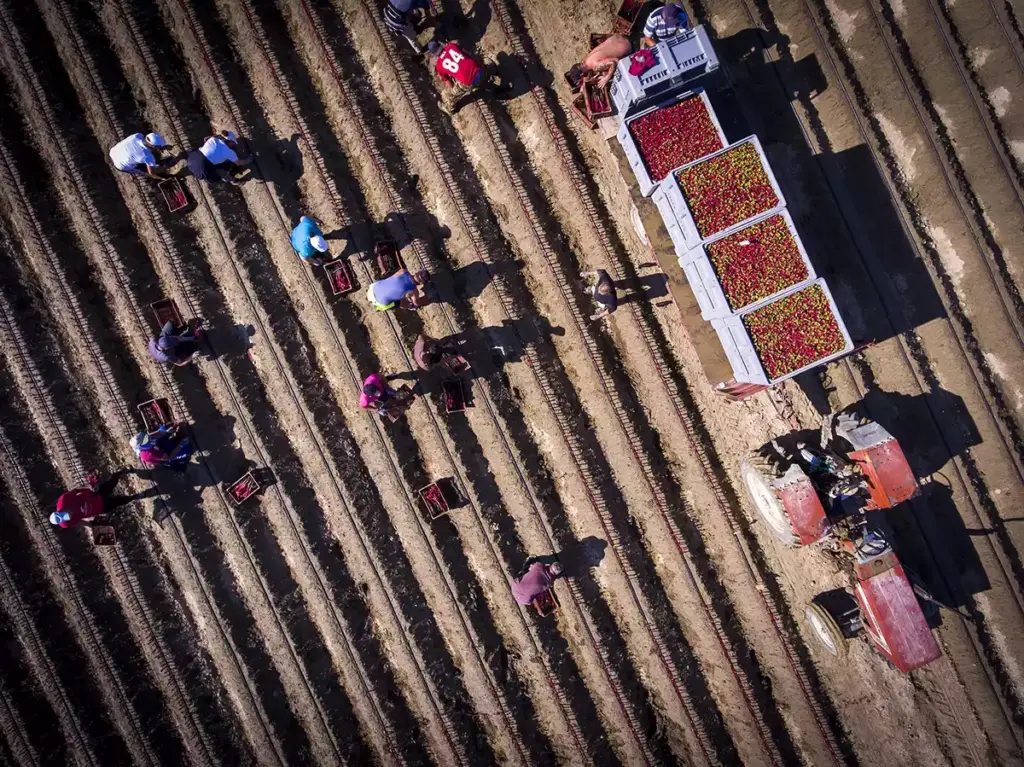
In the second piece in our week-long series on viticulture and viticulturists, Jamie Goode reviews Un Point C’est Tout (“That’s All”), an urgent new film produced by the radical French nursery Pépinière Bérillon and featuring contributions from a starry cast of winegrowers, which sounds the alarm about the decline of vineyards in France.
Viticulture special: Marco Simonit—A lesson in substance and style
Back in August 2021 I did something I’ve not done before. I visited a vine nursery, a pépinière. But this was no ordinary nursery. It was a name everyone was talking about in the wine world, part of an industry that’s vital to vineyards worldwide but hides in the background: Lilian Bérillon.
This lean, slightly wiry 50 year old is doing to nursery practice what Marco Simonit has done for pruning: making it sexy. Just as Simonit has carved a name for himself telling the wine world that they’ve been doing pruning wrong, and that this could be a cause of widespread vine decline, Bérillon is pointing out that we are in danger of losing old vines because of poor nursery work, using the wrong type of graft, and our dependence on just a few clones of rootstocks and varieties. Bérillon has been working with leading winegrowers to create massal selections of each variety, and has then been growing them up and grafting them using an older technique called the greffe à l’Anglaise (known in English as whip and tongue) that he claims creates a much better graft union than the ubiquitous (quicker and cheaper) omega graft that was introduced in the mid-1970s. He has also been working on rootstock selections, but here his hands are tied because legally only a few clones of each rootstock type are permitted. But he grows his rootstock on trellises and farms biodynamically, whereas most use herbicides and allow the rootstock canopies to trail on the ground.
Bérillon’s point
Now he has released a documentary film exploring these issues in more detail, called Un Point C’est Tout. The film begins with a roll call of some of the great and the good of the French winegrowing world, who are all clients of Lilian Bérillon. They introduce the two main themes that this documentary is focused on. We begin with Anselme Selosse (Champagne Jacques Selosse), in his cellar, who somewhat philosophically states, “Now we’re at a point where we realize we’ve come to the end of the journey suggested to us.” [The film is in French, but is subtitled, and all quotes here are from the subtitles.] We then quickly switch to Jean Louis Chave in his vineyards in Hermitage, which interestingly, as well as being planted sur echalas (vines on individual stakes, normal for the Northern Rhône), now also use tressage, where there is no trimming, but pairs of vines have their shoots braided together forming a two-vine arch. Chave raises the point that with clonal selection, “the terroir was no longer able to transcend the grape variety: in other words, the grape variety predominated.” We then head to another luminary, Jean-Baptiste Lécaillon of Champagne Roederer. “Our crusade is a quest for taste: the idea is to really seek out in this genetic diversity, in the terroir, in the plots, in the soils, the taste of great wine.”
We change theme, heading back to the Northern Rhône, with Christine Vernay and her daughter Emma in the vineyards of Condrieu. They introduce the concept of the life expectancy of a vine. Thierry Germain in Saumur picks this up, saying that when he plants a vineyard, he plants it for his grandchildren and great grandchildren. And then we meet Lalou Bize-Leroy, still sparkly at 91, saying that she has never uprooted a vine ever. And Peter Sisseck of Pingus weighs in, suggesting that replanting vineyards every 20 years is expensive and not sustainable. Selosse is back to pick up on this theme too. All of this happens in the first 2 minutes 20 seconds of this 52-minute film.
Two key themes
These are the two key themes of this documentary: two current crises in viticulture. The first is the loss of genetic diversity occurring in vineyards where all plantings are clonal. The second is the shortened lifespan of modern vineyards caused by poor quality nursery work. So, what are the solutions? This is where Bérillon comes in. He has some strong opinions about how we can address these issues.
“10% of French vineyards are dying off,” says the narrator. “And we are not sure why.” Trunk disease ESCA is often cited as the main problem, but is it as simple as this? Could other factors be at work? The film cites the lack of diversity in plant material, which is industrially produced and incapable of aging, and a lack of consideration for this plant material by the people using it.
“Today French vineyards are dying off,” states Caroline Chevallier of Château de Villeneuve in the Loire Valley, reinforcing the point made by the narrator. “We have vines that are less and less perennial, only lasting 20 years or so.” Whereas, she points out, plantings from the 1940s and 50s are living to a grand old age. Jérôme Bressy of Gourt de Martens in Rasteau says that he’s ended up taking out his clonal plantings from the 1980s. They were doing badly, and so he’s gone back to massal selections, noticing a big improvement. Germain complains that the government subsidises clonal planting, but not massal selections. And Lécaillon makes the good point that genetic diversity in the vineyard helps create resilience in the face of an unpredictable and extreme climate. The vines aren’t all doing everything at the same time, so it’s a sort of insurance.

Then we meet respected wine scientist Alain Deloire, who talks about the graft union. When a vine is grafted the scion and rootstock are cut and joined so that their cambial layers (a layer of tissue under the bark that creates the xylem and phloem, the conductive tissue of the vine) are in close apposition. Then a layer of undifferentiated cells called a callus forms, and from this cells differentiate to join the conductive tissues of both partners. The success of the grafting depends on this union being sound. The vast majority of vines are grafted using a grafting technique called omega. This is done with a machine invented in Germany in the 1970s, and it allows scion and rootstock to be joined in a single step, thus speeding up the process. The join is in the shape of the Greek letter omega, hence the name of the graft. Deloire has studied the quality of the union and the fusion of the xylem and phloem, and although he says there is no such thing as a perfect union, the whip and tongue allows a better join between the conducting systems. He also adds that the omega graft may be solid on leaving the nursery, but for mechanical reasons, not because of the good fusion of the scion and rootstock. At Bérillon, they manually test the plants they sell and reject any that aren’t solid. Many nurseries don’t sort their vines properly after lifting. “We throw away on average one out of every two vines, after all that work,” says Bérillon. “Maybe the root system doesn’t look right, maybe they haven’t produced enough vegetation above ground, or they snap when we bend them.” Their acceptance rate is 50 percent whereas the average in the industry is 78 percent.
“I am convinced, and have observed many times, that omega grafting is, I think, one of the biggest problems in viticulture today,” says Sisseck. Bressy agrees, saying that omega is no good for growing old vines: “Our ancestors used slit grafts for a reason,” he says. The need for old vines? Perhaps Bize-Leroy exaggerates a little, but she claims, “you need at least 30 years for the vine to start saying something. A vine has to be old.”
A compelling film
This film is compelling, especially considering the roll call of wine producers who have contributed. The decline in vineyards in France (and elsewhere, but this is not covered in this film) is marked and it’s likely that it’s not simply ESCA that is responsible. Climate chaos has certainly made viticulture more challenging, and poor pruning practices likely play some role. But the limited vine genetic diversity and the lack of quality planting material is also likely a factor, as this documentary suggests. The omega graft in particular looks suspect, although there are those who argue that when done well, it is a good union.
The thorny issue is that of cost. It’s possible to buy grafted vines for €1.2-1.4, says Bérillon, whereas his vines are around €6 each. This vastly increases the cost of planting a vineyard, but if you are planting for the future generations, then this isn’t something you want to economize on.
No doubt this documentary will be seen as controversial by some, but it may prove to be a wake-up call to the wine industry at large—or at least those who have some interest in their vineyards growing old. Personally, I find the arguments presented convincing, after visiting Bérillon and seeing what he does first hand.






